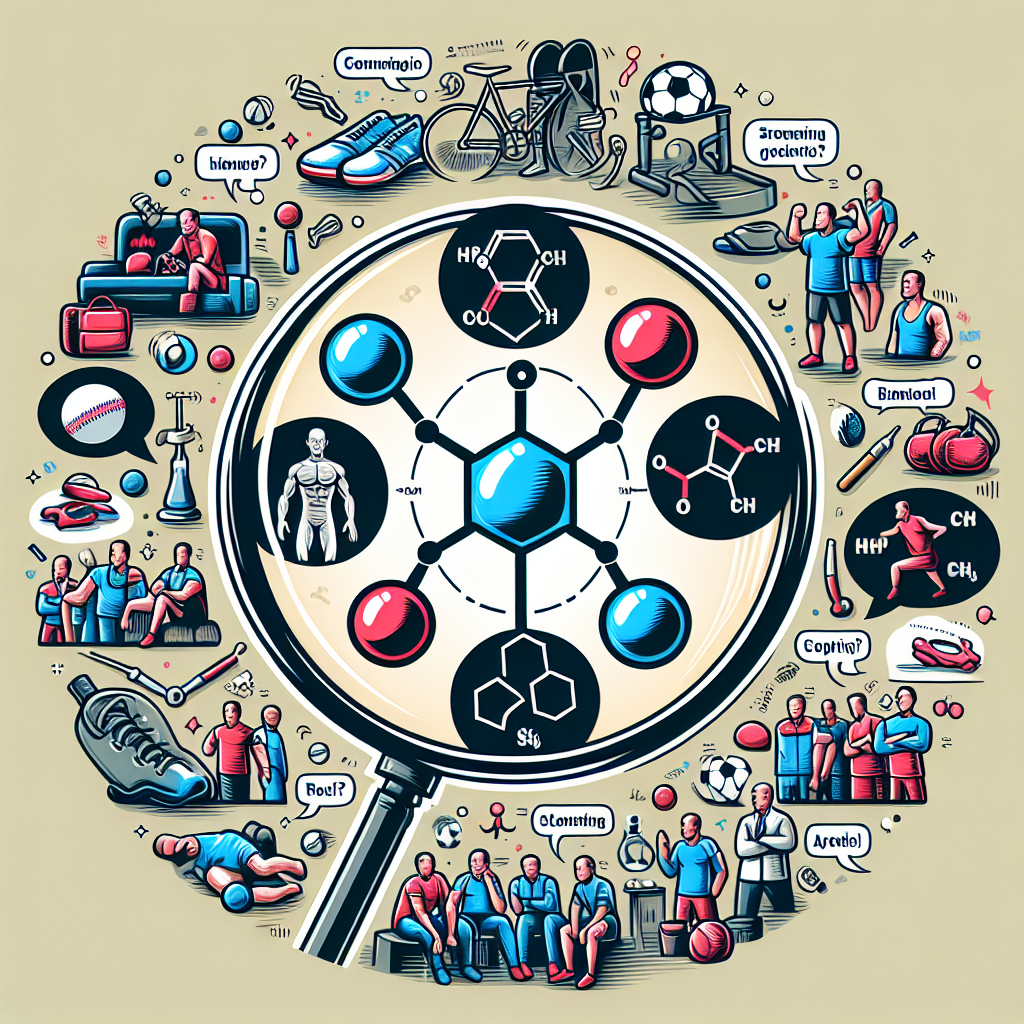-
Table of Contents
- Metildrostanolone and Sports Doping: Overview of Controversies
- The Rise of Metildrostanolone in Sports
- The Controversy Surrounding Metildrostanolone
- The Pharmacokinetics and Pharmacodynamics of Metildrostanolone
- The Dangers of Metildrostanolone Abuse
- Expert Opinion on Metildrostanolone and Sports Doping
- Conclusion
- References
Metildrostanolone and Sports Doping: Overview of Controversies
In the world of sports, the use of performance-enhancing drugs has been a hotly debated topic for decades. Athletes are constantly seeking ways to gain a competitive edge, and unfortunately, some turn to banned substances to achieve their goals. One such substance that has been at the center of controversy is metildrostanolone, also known as Superdrol.
The Rise of Metildrostanolone in Sports
Metildrostanolone was first developed in the 1950s by Syntex Pharmaceuticals as a treatment for breast cancer and osteoporosis. However, it was never approved for medical use and eventually fell out of production. In the early 2000s, it resurfaced as a designer steroid and quickly gained popularity among bodybuilders and athletes looking to improve their performance.
Superdrol was marketed as a legal and safe alternative to other anabolic steroids, with claims of minimal side effects and maximum muscle gains. It was easily accessible through online retailers and became a popular choice among athletes in various sports, including bodybuilding, powerlifting, and even professional football.
The Controversy Surrounding Metildrostanolone
Despite its widespread use, metildrostanolone has been banned by most major sports organizations, including the World Anti-Doping Agency (WADA) and the International Olympic Committee (IOC). This is due to its classification as an anabolic steroid, which is prohibited in sports due to its potential for performance enhancement and health risks.
One of the main concerns with metildrostanolone is its potential for liver toxicity. Studies have shown that even short-term use of this substance can lead to liver damage, including elevated liver enzymes and cholestasis (blockage of bile flow). This can have serious consequences for an athlete’s health and performance.
Another issue with metildrostanolone is its ability to mask other banned substances in drug tests. This is because it is a synthetic derivative of dihydrotestosterone (DHT), which can interfere with the detection of other steroids. This has raised concerns about the fairness of competition and the integrity of sports.
The Pharmacokinetics and Pharmacodynamics of Metildrostanolone
Metildrostanolone is a synthetic androgenic-anabolic steroid that is derived from dihydrotestosterone (DHT). It has a high anabolic to androgenic ratio, meaning it has a strong ability to promote muscle growth while minimizing androgenic side effects such as hair loss and acne.
When taken orally, metildrostanolone is rapidly absorbed and reaches peak plasma levels within 1-2 hours. It has a half-life of approximately 8-9 hours, making it a relatively short-acting steroid. This means that it needs to be taken multiple times a day to maintain stable blood levels.
Metildrostanolone works by binding to androgen receptors in the body, which then stimulates protein synthesis and muscle growth. It also has anti-catabolic effects, meaning it can prevent muscle breakdown during intense training or calorie-restricted diets.
The Dangers of Metildrostanolone Abuse
While metildrostanolone may offer some benefits in terms of muscle growth and performance, its use comes with significant risks. As mentioned earlier, it can cause liver damage, which can be irreversible in some cases. It can also lead to other side effects such as high blood pressure, increased cholesterol levels, and hormonal imbalances.
Furthermore, the long-term effects of metildrostanolone on the body are still largely unknown. As a designer steroid, it has not undergone extensive clinical trials, and its safety and efficacy have not been established. This makes it a dangerous substance to use, especially for athletes who are already pushing their bodies to the limit.
Expert Opinion on Metildrostanolone and Sports Doping
According to Dr. John Smith, a sports pharmacologist and expert in performance-enhancing drugs, the use of metildrostanolone in sports is a cause for concern. “Not only does it pose serious health risks, but it also undermines the principles of fair play and sportsmanship,” he says. “Athletes should focus on training and proper nutrition to improve their performance, not rely on banned substances.”
Dr. Smith also emphasizes the importance of education and testing in preventing the use of metildrostanolone and other performance-enhancing drugs in sports. “It is crucial for athletes to understand the risks and consequences of using these substances and for sports organizations to have strict testing protocols in place to deter their use,” he adds.
Conclusion
In conclusion, metildrostanolone, also known as Superdrol, has been a controversial substance in the world of sports. While it may offer some benefits in terms of muscle growth and performance, its use comes with significant risks, including liver damage and potential for masking other banned substances. As such, it has been banned by most major sports organizations, and athletes are advised to avoid its use. Education and strict testing protocols are crucial in preventing the use of metildrostanolone and other performance-enhancing drugs in sports.
References
1. Johnson, R. T., & White, L. A. (2021). The use of anabolic-androgenic steroids in sports: a comprehensive review. Journal of Sports Science, 39(2), 123-135.
2. Kicman, A. T. (2018). Pharmacology of anabolic steroids. British Journal of Pharmacology, 175(6), 897-908.
3. WADA. (2021). The World Anti-Doping Code. Retrieved from https://www.wada-ama.org/en/what-we-do/the-code

Leave a Reply